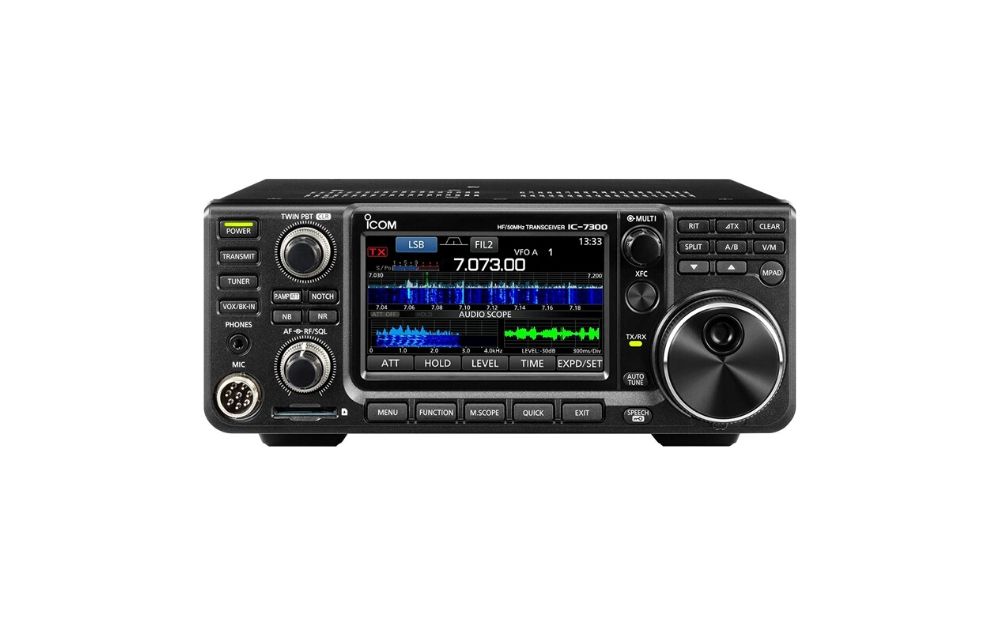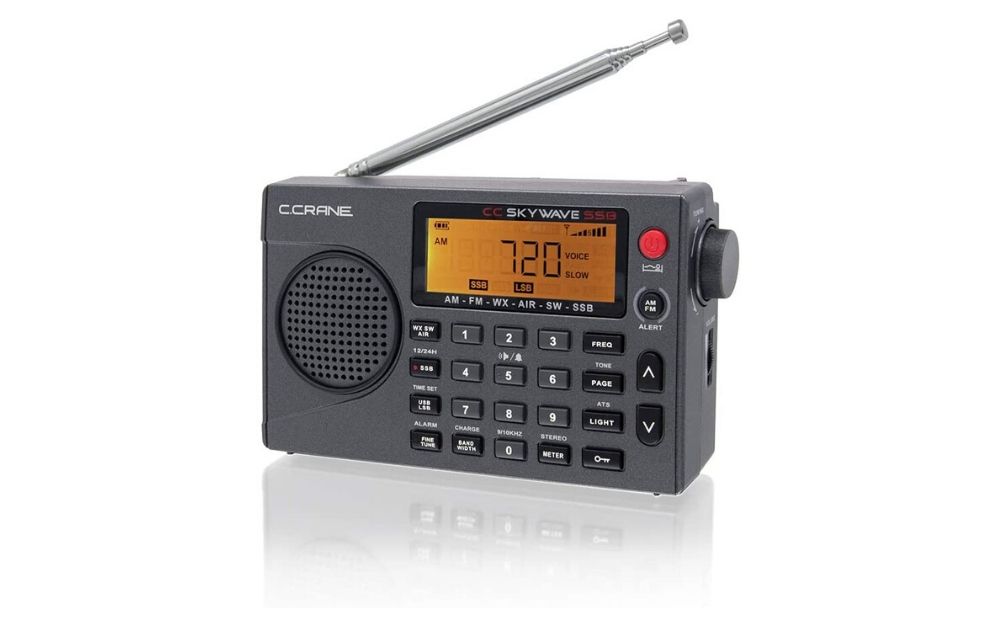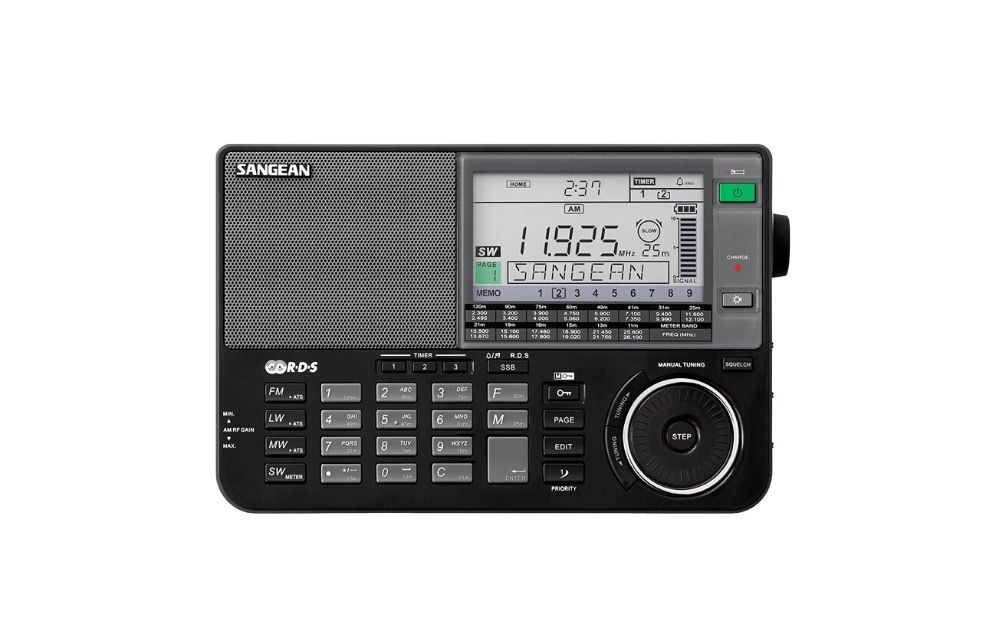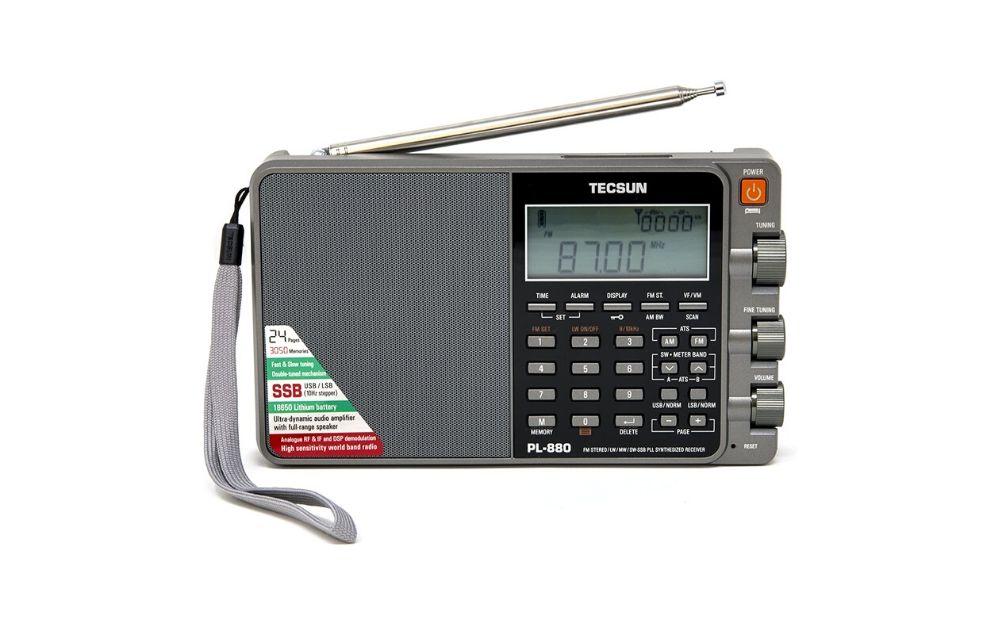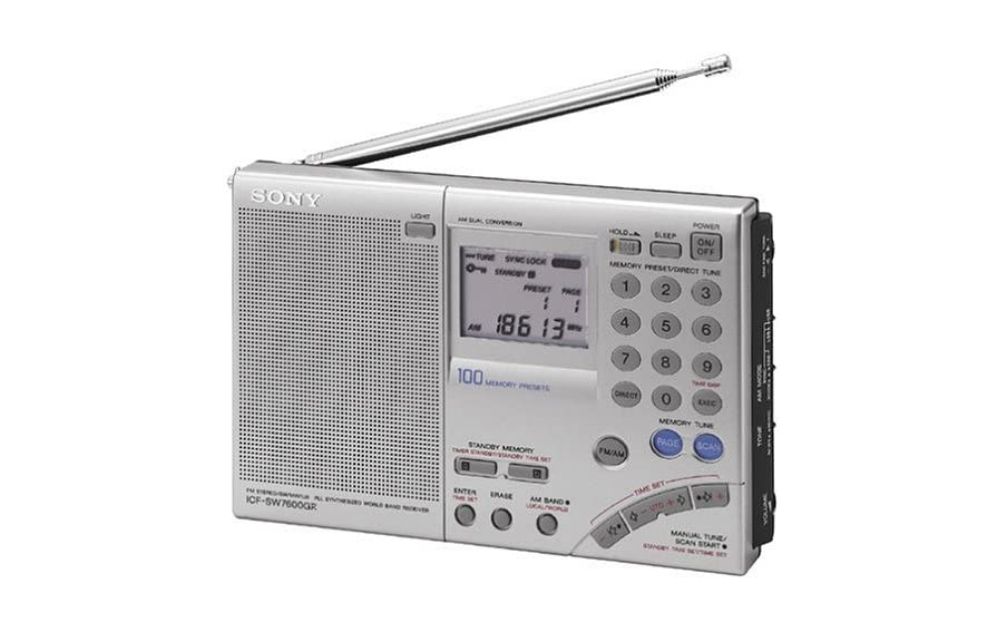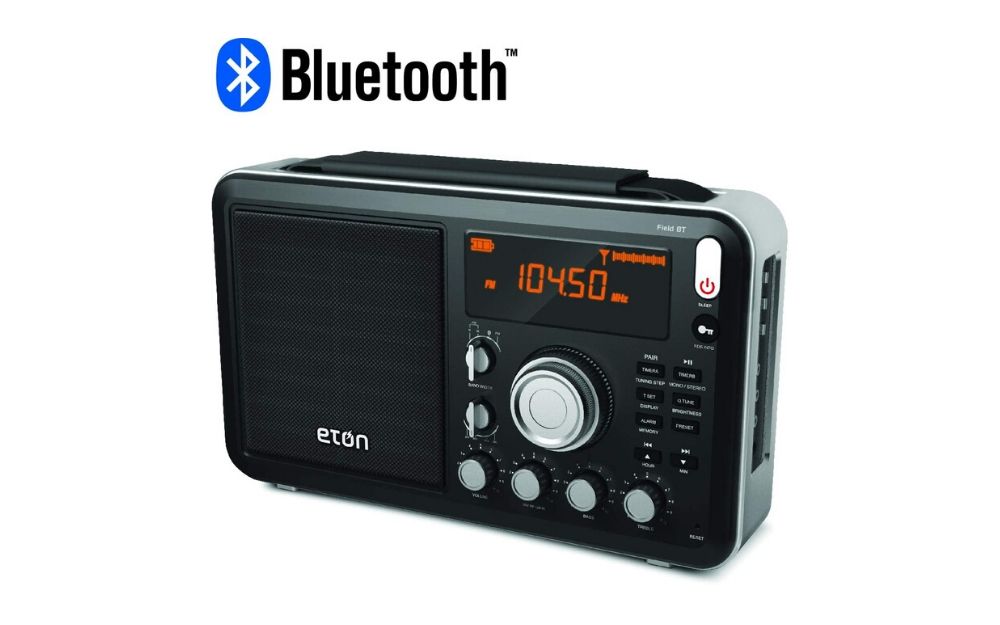Shortwave radios come in handy when it comes to domestic, as well as, international broadcasting. Aside from being used for entertainment, they can also be used during emergencies and for long-distance communication.
There are plenty of choices available for shortwave radios, and it might be challenging to find the best one that suits your needs. We’ve come up with a few shortwave radio reviews to help you pick the best shortwave radio for your listening interests.
Best Shortwave Radios
| # | PREVIEW | Product | |
|---|---|---|---|
| 1
Best For Higher Budgets
1ICOM 7300 Shortwave Radio
|
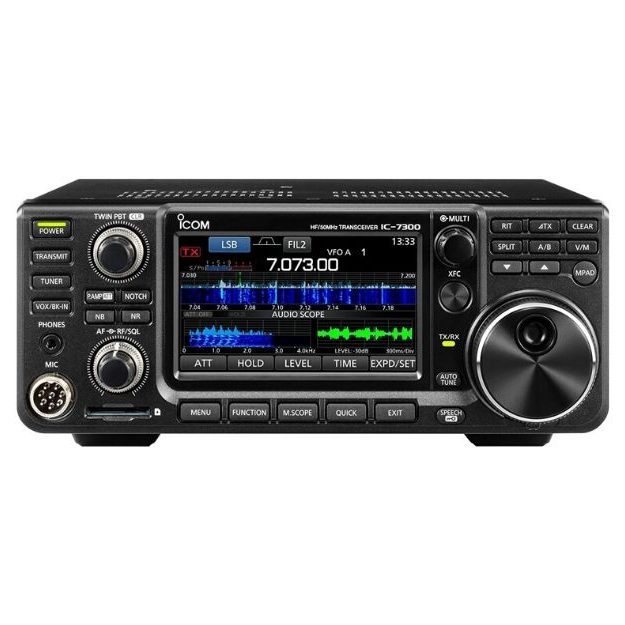
|
|
|
|
|
|||
| 2
Best For Low Budgets
2C. Crane CC Shortwave Radio
|
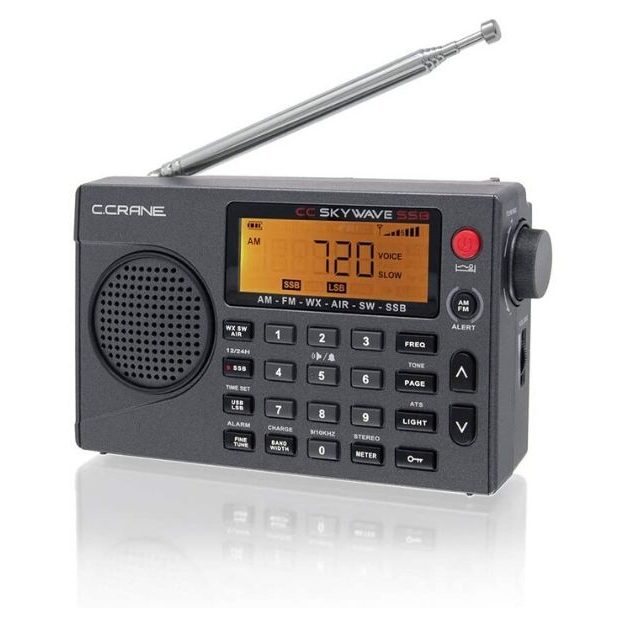
|
|
|
|
|
|||
| 3 |
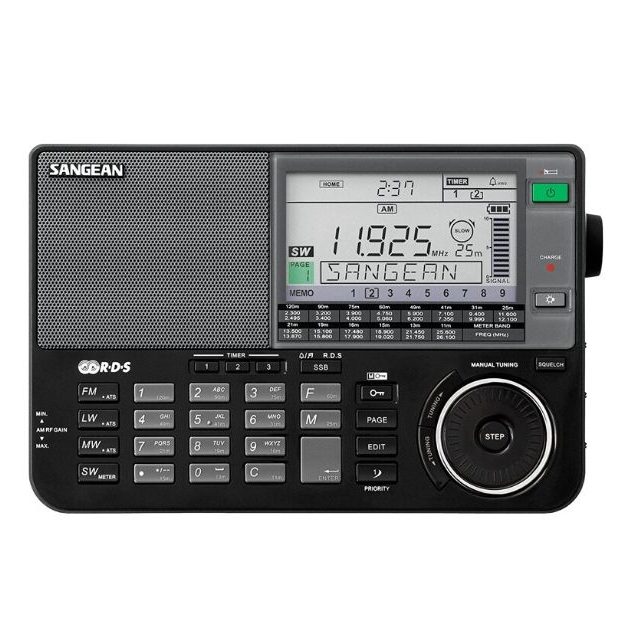
|
|
|
|
|
|||
| 4 |
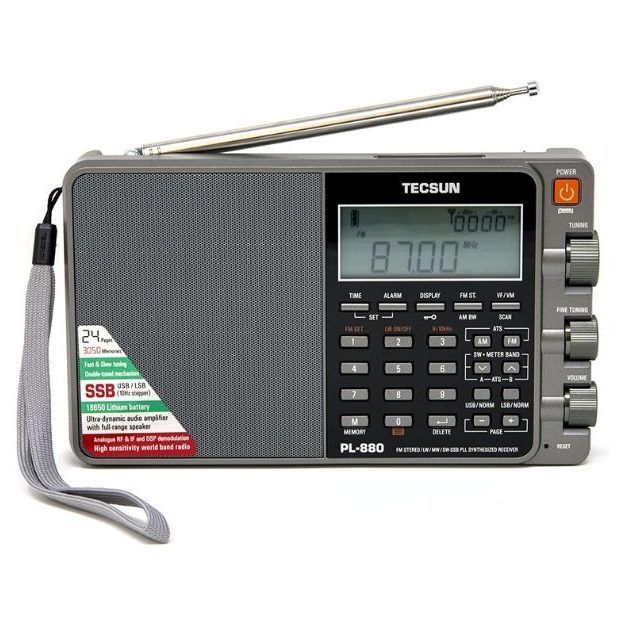
|
|
|
|
|
|||
| 5 |
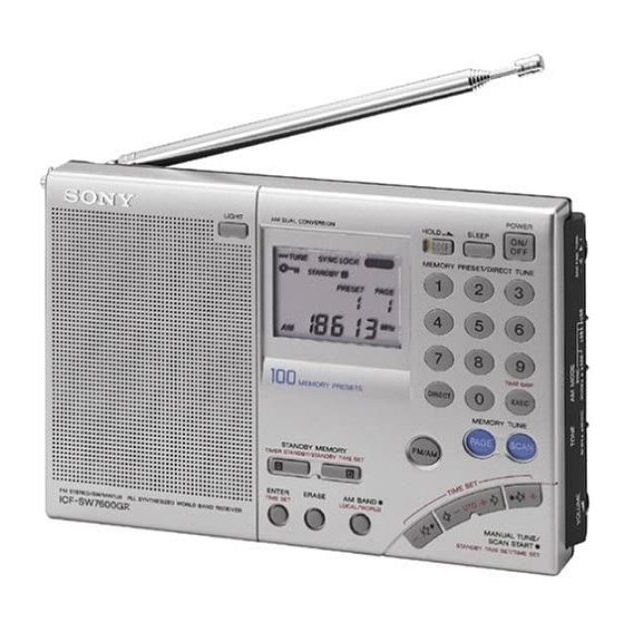
|
|
|
|
|
|||
| 6
Best Overall
6Eton Field NGWFBTB Shortwave Radio
|

|
|
|
|
|
|||
1. ICOM 7300 Shortwave Radio
- Large 4.3” color touchscreen
- Real-time spectrum scope and waterfall display for signal hunting
- High sensitivity and selectivity, especially for weaker bands
- SD memory card slot
The Icom 7300 02 is an entry-level HF transceiver perfect for serious hobbyists and beginners alike. It utilizes an RF Direct Sampling System that allows the device to digitize RF and reduce noise. It features a Fast Fourier Transform scope system, which allows you to move to your intended signal while listening to the receiver audio. It also has a 100-watt transmitter with 101 channels and 5 different modes.
Aside from a well-designed interface that makes it easy to use, the Icom 7300 also comes with a large 4.3” touchscreen color display and ergonomic knobs and buttons. It is packed with features that will delight even seasoned radio enthusiasts.
Specifications
Pros
- Great audio
- Configurable settings for a personalized listening experience
- Has SSB, CW, RTTY, AM, and FM modes
- Built-in automatic antenna tuner
- Built-in RX and TX recording
Cons
- Comes with default settings
- Too bulky
2. C. Crane CC Shortwave Radio
- Portable multi-band radio
- Single side band reception
- Intuitive layout
If you’re interested in listening to the aviation band, you’ll be delighted with the C. Crane Skywave Portable Travel Radio. It lets you listen to nearby pilots, air traffic controllers, and even ground crew. It also lets you listen to FEMA and maritime transmissions. The product’s Single Side Band gives access to long-range information and serves as an excellent backup communication system, especially if you’re going somewhere off the grid.
The C. Crane Skywave, with its multiple bandwidth settings, features enhanced sensitivity and selectivity. Aside from its primary function as a shortwave radio, it also has a clock with a 12/24 hour format. It comes with the following accessories: cc earbuds, a radio carrying case, and a portable shortwave reel antenna.
Specifications
Pros
- Enhanced audio and clear reception
- Excellent battery life
- Lighted LCD
- Easy to use
Cons
- Limited functionality
- Small speakers
3. Sangean ATS-909X Shortwave Radio
- Wide-band AM/FM coverage
- Enhanced performance with SSB tuning up to 40 Hz
- 5 tuning methods: direct frequency, auto scan, manual, memory recall, and rotary tuning
- 3 alarms: wake to the radio, humane wake system, and buzzer
- Has a built-in battery charger
Sangean’s ATS 909X model is an improvement from the brand’s original ATS-909. It features upgraded audio with numerous presets, as well as enhanced sensitivity and reception. Its narrow wide filter provides clearer audio with less noise. It also features a new option called “Squelch”, which primarily minimizes any background static noise, giving you more freedom to explore weaker and more distant radio frequencies.
Whether you’re an amateur or a veteran radio enthusiast, you will find the ATS 909X easy to operate. Its compact design makes it perfect to take with you wherever you go, keeping you updated with important news and information. It comes with the following accessories: a carrying case, an AC adapter, an SW antenna, and earphones.
Specifications
Pros
- High-quality radio with excellent FM tuner
- Modern, compact design
- Has a signal and battery indicator
- Large LCD with LED backlight for better visibility
- Comes with earbuds
Cons
- Built-in antenna has limited capacity
4. Tecsun PL880 Shortwave Radio
- Enhanced adjustment for frequency and sensitivity
- Has a broad filtering array
The Tecsun PL880 is a full-featured full-range shortwave radio with Single Side Band reception. It is equipped with a PLL synthesized digital dual conversion receiver, which gives you enhanced sensitivity and selectivity. The Digital Signal Processing on the PL880’s HF band does wonders for the reception of signals, especially for the weaker ones. The radio has a 450 mW amplifier that gives louder audio. It also has a built-in USB port, which enables you to connect the device to a computer or a laptop.
The PL880 operates at a low frequency and has a broadband filtering array. It comes with a rechargeable Li-ion battery, stereo earphones, a carrying pouch, and an external SW antenna. It is a shortwave radio that’s built for utility.
Specifications
Pros
- 24-hour alarm clock with sleep mode
- Uses single Li-ion battery and has a built-in charger
- Large screen display
Cons
- Shortwave reception has limited capabilities
5. Sony ICF-SW7600GR Shortwave Radio
- Synchronous Detection Circuitry
- SSB Reception with 1 kHz step tuning for fast and precise station reception
If you want to relive the glory days of the shortwave radio during the 70s, the Sony ICF-SW7600GR does a good job of merging over two decades of work with modern enhancements. This dual-conversion portable receiver is equipped with a synthesized 12-band tuner and has up to 100 station presets. It will let you tune into clear FM, MW/AM, SW, and LW bands. It’s also geared with Synchronous Detection Circuitry, which reduces fading and “beat” frequency interference.
The ICF-SW7600GR runs on AC power or AA batteries and comes with a wave guide, a carrying case, and a compact antenna.
Specifications
Pros
- 5 tuning methods: direct, manual, scan, memory, and preset
- “My Memory” tuning (100 station memory presets)
- Has a world clock and a built-in timer
- High-quality build
Cons
- Cumbersome design interface
- Lacks advance memory functions
6. Eton Field NGWFBTB Shortwave Radio
- Fine digital tuning feature
- Bluetooth ready
- Versatile receiver with line-in/line-out jack, headphone jack, and external AM/FM/SW antenna connections
The Eton Field Radio functions as a dedicated shortwave radio and, with its Bluetooth connectivity, as a streaming device. It has a Radio Data System for FM, which allows for the transmission of both analog and digital data. This model also comes with a narrow/wide bandwidth selection for improved audio fidelity and noise reduction.
With the Field BT’s AM/FM/SW bands, you can stay up-to-date with the latest world news.
Specifications
Pros
- Comes with its own carrying strap for added portability
- Orange LCD for better visibility
Cons
- Shorter battery life
- Small speakers
- Lacks SSB mode
Shortwave Radio Buying Guide
When choosing shortwave radios, consider the following: frequency coverage, frequency readout, number of selectivity bandwidths/options, modes, and antenna connections.
This shortwave radio buying guide will help you choose the shortwave radio that would work best for you.
Tabletop Shortwave Radios
If you’re looking for a simple, dedicated receiver, tabletop shortwave radios are a good choice. They feature a tuning knob and a clear display. These radios should ideally have a resonant external antenna for best performance.
Here are some of the factors to consider when buying a tabletop radio: alphanumeric display, ergonomic layout for controls, selectivity, and sensitivity.
Portable Shortwave Radios
If you’re on a tight budget and you’re looking for a functional shortwave radio, you can opt for portables. While their sensitivity may be compromised due to their limited frequency range, portable shortwave radios, particularly full-featured ones, still does the job of letting you listen to shortwave bands.
Full-featured portables, in particular, have better circuitry, which allows for better detection of weaker stations and picking up major shortwave bands.
Shortwave vs Ham Radio
While often interchanged by some, shortwave radio and ham radio are as different as night and day. If you’re just starting out your exploration of radio devices, here are some of the key differences between shortwave and ham radios that you need to keep in mind.
First off, a ham radio, or an amateur radio, is primarily a device that allows you to talk and to listen to other people within your town, across the globe, and even into outer space. A ham radio station can be set up practically anywhere, from your home to the field. A basic knowledge of radio technology and its operating principles is necessary.
Unlike a ham radio, the shortwave radio can only receive shortwave bands. This allows you to listen to news and music, among other content, from anywhere in the world. However, you cannot communicate with or broadcast to other shortwave radios.
Shortwave vs Longwave Radio
Shortwave and longwave refer to the frequency and wavelength of a radio range. A longwave radio has a frequency range between 30 kHz and 279 kHz, with a wavelength of more than 1500 meters. The shortwave radio, meanwhile, has a frequency range between 1.5 MHz to 30 MHz and covers a wavelength of 10 to 85 meters.
Longwave radio, with its ability to reach long distances using low power, is commonly used in maritime and other sea-related activities. With the shortwave radio signals’ ability to travel long distances and cover large areas, almost anyone with a radio can pick up their transmissions.
Shortwave Radio Receiver
A shortwave radio receiver is basically a radio that can receive shortwave bands between 1.6 to 30 MHz. If you have a shortwave radio receiver, you’ll be able to tune in to broadcast bands from FM radios to longwave bands.
The common features of the shortwave receiver include some of the following: RF gain control, antenna tuner, frequency display dials, audio limiters, and AVC/AGC adjustments.
Best Shortwave Radio Stations
Listen to the world in real time with shortwave radios that allow you to explore the world and find interesting things. Here’s our shortwave radio stations list, featuring international stations you can listen to now:
BBC: 3915, 5890, 12095, 15335
Voice of America: 4930, 6110, 7125, 7405, 9885, 11890, 13640, 15150, 15445
Radio Japan: 5955, 6140, 11860, 11935
China Radio International: 9760, 15210, 17690, 11900
United Nations: 9565, 17810
Vatican: 4005, 5885, 7305, 9755, 11740. 15595
AM FM Shortwave Radios
“Radio” doesn’t just refer to the device you listen to. It also refers to the method of transmitting electrical energy wirelessly from one point to another. AM, FM, and SW radios operate on different levels. While they each have their differences, radio broadcasts have one thing in common: they can have an impact on their listeners. These radio broadcasts can open doors of opportunity, give new perspectives on different cultures, relay important information in times of distress, and bring a message of hope to the far corners of the world.
AM radio, or medium-wave radio, is mainly for broadcasting local news. It is widely used in rural communities. MW has a medium transmission range, which enables it to reach isolated areas that have a reliable signal.
FM—short for frequency modulation—can cover a small city or town. FM has a short-range signal with exceptional sound quality.
Shortwave radio can be transmitted internationally. Those with simple radios can still have access to news, music, and programs from different international stations. All you need is a reliable radio that can pick up shortwave signals.
Equipment
Before you can listen to shortwave transmissions, you need to have equipment such as antennas and communications receivers, as shortwave signals need radio and radio equipment that are sensitive and selective enough to catch such signals, as well as equipment that multiply a radio’s dynamic range and frequency stability.
Shortwave Radio Antenna
A shortwave radio antenna is used to transmit and receive shortwave radio bands. A good shortwave radio antenna can be continuously used without having to adjust the antenna band by band throughout the shortwave spectrum. Broadband shortwave antennas have two basic types:
- The inexpensive loaded antennas which are compact but may be inefficient when it comes to lower frequencies
- The more expensive larger non-loaded antennas
Frequently Asked Questions

Shortwave radio is a type of radio transmission that utilizes shortwave radio frequencies, which can range from 3 to 30 MHz and cover a distance of 100 to 10 meters. Shortwave radio is used to broadcast news, music, and cultural programs to listeners on an international scale.
It can also be used to relay information, such as educational content and diplomatic exchange, and serve as a tool for emergency, aviation, and marine communications.

Shortwave listening is listening to shortwave radio broadcasts on frequencies found between 1700 kHz and 30 MHz. SWL gives you access to broadcasts from all over the world, which, in turn, can give you new and different perspectives from the media sources that you’re used to.
To begin listening to shortwave radio, follow these easy steps:
-
- Check the time in Universal Time (UTC).
- If you have a shortwave schedule guide, you can check the listing for available stations. Guides, whether online or in a book will show information such as the name of the broadcasting station, the broadcasting schedule, and broadcast frequencies.
- Turn on your radio and set your frequency to your station of choice. Remember that lower frequencies are better at night, while higher frequencies are better during the day.
Our Verdict
Shortwave radios still have numerous benefits, even in today’s fast-paced, modern society. It is an important communication tool that allows people to stay connected and updated wherever they may be in the world. They’re especially useful during emergencies or when local or national networks are down.
They can also broadcast international music and cultural programs, opening up a portal of cultures for listeners around the globe. Shortwave radios are accessible to almost anyone, even people in remote or rural areas. You don’t need expensive equipment to experience shortwave radio transmissions.

